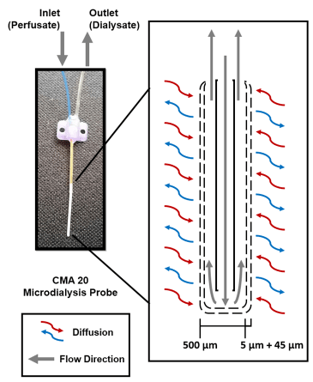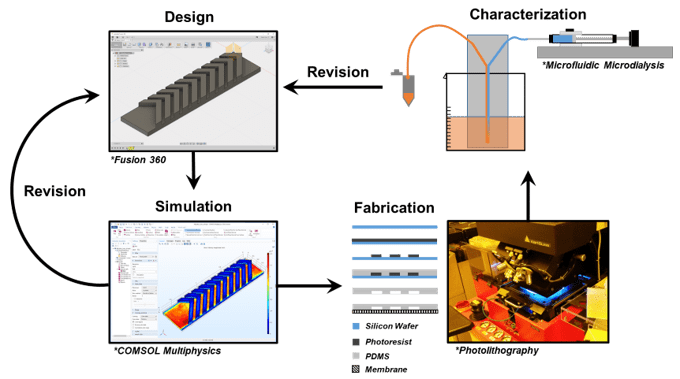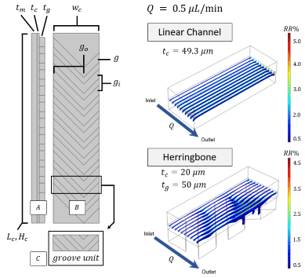Increasing Microdialysis Recovery using COMSOL and Microfluidics
Student: Patrick Pysz
Degree: M.S., December 2019
Major Professor: Dr. Julie Stenken
Research Area(s):
Biological Materials and Devices
Nanoscale Materials and Devices
Background/Relevance
- Microdialysis (µD) – diffusion based sampling technique for in vivo collection.
- Requires extensive in vivo calibration.

Innovation
- Predict µD relative recovery (RR).
- Simulate new µD device with improved relative recovery.
Approach

Key Results
- µD herringbone linear channel simulated with COMSOL
- Concentration boundary layer collapsed without increasing the fluid linear velocity.
- 16.9% increase in RR above simple linear channel.

Conclusions
- COMSOL template µD model developed for custom geometries.
- Characteristic length scales for diffusion and advection were optimized for a linear-looped µD probe yielding a 16.1% relative increase in RR at a 1.0 µL/min flow rate.
- Concentration boundary layers were shifted using a herringbone mixer µD probe design with a 16.9 ± 0.7% relative increase in RR over seven different flow rates.
- Linear-looped µD probes can be fabricated in PDMS with in-house fabricated polyethersulfone membranes.
Future Work
-
Optimize herringbone geometry for further increases in RR.
